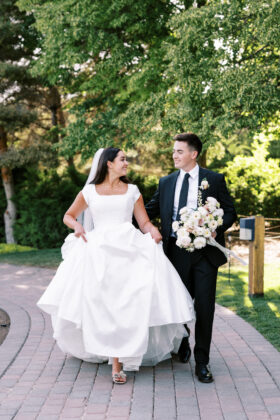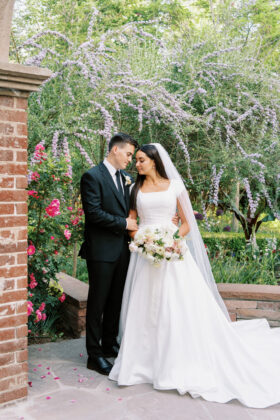Stories are often told about the “Honeymoon Phase” after couples first get married: a time of bliss, happiness and calm after the stresses of planning and carrying out a wedding. Pictures of honeymoons, laughter and experiences are shared on social media, often depicting married life as the best time of a person’s life.
Chelom Leavitt, a marriage prep professor from the School of Family Life at BYU, said this time is often described by scholars as the “romantic stage.” She said the period of time after a couple is married, generally anywhere from six months to two years, is a time where couples experience “limerence,” which is when they are so infatuated with each other and in a state of euphoria, that they are less likely to focus on deeper issues.
Although the first six months to two years of marriage can be a time of limerence, Leavitt said, “When we start learning about someone on a deeper level, it can challenge us.”
According to Leavitt, difficulties can arise in marriages after the limerence wears off when they start to discuss deeper issues and feel a need to engage in more problem-solving. She recommends that couples work with each other before they get married to be prepared to deal with some of these issues.
“Money, sex, family of origin traditions and emotions are all important topics couples engage with,” she said. Leavitt said it is important for individuals within a marriage to take inventory of how emotionally vulnerable they are, and how they solve problems.
She also stressed personal development and growth as ways to help struggling couples. She said an important starting point for this is to personally ask how each person’s attitude is toward growth, if they are ready to grow and let go of the way they may have done things.
BYU student Michael Moran said he is not a fan of the saying “honeymoon phase.” He and his wife, Kyra Hale, were married in July of 2021.
“The first year we were still learning how to communicate our feelings,” Moran said. He said that one of the biggest adjustments in the first year of marriage was learning how to live together and talk about difficult things.
“I would tell myself that, even though it might seem in the moment that sharing what I really feel might hurt her, it is better to learn how to communicate clearly and early than to hold back what I really think,” Moran said.
Leavitt said that communication and being “emotionally vulnerable” as spouses is an important aspect of marriage, and that learning it early on is especially important.
Moran said being married to Hale has been wonderful, and working together as a unit has gotten easier with time. He said the first six months were the most difficult, and things have continued to work themselves out with time and communication.
Kate Livingston, a former BYU student who got married in July, said the first year of marriage has been a time to learn and grow with her new husband, Wyatt.
“The first couple months were an adjustment for me,” Livingston said. “I have always been a really social person, and to just live with one person was different.”
Livingston said although there was a learning curve to being married and blending her life with her husband’s, it was a different type of situation than she had been in before, not worse or better than other life adjustments. She said each part of life is hard for different reasons and getting married has been a challenge, but no different than other challenges she has had before.
“The best part of being married is that I get to be with my best friend every day. On days when we are both working from home or have the day off, we get to be with someone and do things with them all day, which is really nice,” she said.
If married couples are struggling, Leavitt offers suggestions on what they can do to work through problems together. She said couples should not wait until their problems become large to seek help through a marriage therapist or counselor.
“First of all, don’t be afraid to reach out and get help earlier rather than later,” she said. “It is better to go early rather than when everything has already fallen apart.”
Whether the honeymoon phase exists or not, Leavitt said having clear communication, love and respect for a spouse can help foster an environment where couples are able to thrive throughout their married lives.











